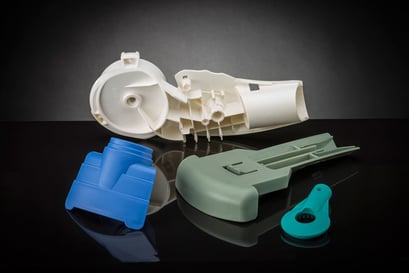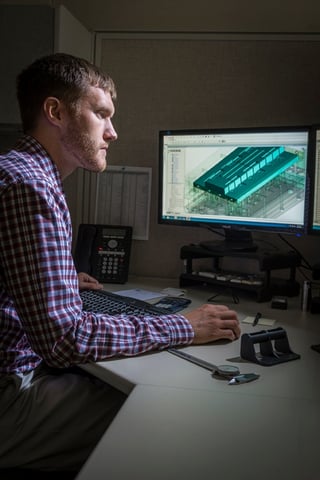When engineering the wall thickness of a plastic part, a careful balance of weight, geometry, and budgetary considerations must be maintained. For example, while thick plastic walls offer more strength, they also have a greater tendency to warp during the cooling stage of the manufacturing process.
Of all the various design aspects, wall thickness has the most significant impact on the cost, production speed, and final quality of a part.
Proper Wall Thickness
 While thick walls offer additional strength, there are some advantages to engineering thinner walls. In fact, the longer a production run, the more benefits that can be gained by keeping a part thin and light, so maintaining optimal wall thickness is particularly important for high-volume injection molding projects. Keeping walls as thin as possible allows for:
While thick walls offer additional strength, there are some advantages to engineering thinner walls. In fact, the longer a production run, the more benefits that can be gained by keeping a part thin and light, so maintaining optimal wall thickness is particularly important for high-volume injection molding projects. Keeping walls as thin as possible allows for:
- Resistance to warping during the cooling process
- Reduced costs due to less material usage and faster manufacturing
- Reduced overall weight for ease of handling, management, and shipping
- Quicker cooling cycles for shorter, more efficient production run time
Wall thicknesses are not subject to any restrictions, but generally, the goal is to create the thinnest wall possible while taking into account the part’s structural requirements and overall size and geometry. The flow behavior and material qualities of the resin should also be considered.
Creating Uniform Wall Thickness
Consistent wall thickness is critical during the cooling process in injection molding; if some sections of a part are thinner than others, the part may be vulnerable to warping, cracking, twisting, and overall failure. Uniform wall thickness minimizes both shrinkage and residual stress in the final part.
 If completely uniform walls simply aren’t an option, gradual thickness variations are essential to maintaining design stability. Wall thickness variations in high-mold-shrinkage plastics should never exceed 10%, even with gradual transitions to accommodate for potential stress concentrations.
If completely uniform walls simply aren’t an option, gradual thickness variations are essential to maintaining design stability. Wall thickness variations in high-mold-shrinkage plastics should never exceed 10%, even with gradual transitions to accommodate for potential stress concentrations.
Uniform wall thickness also allows for the most efficient, uniform flow of resin through a tool for ideal processing. Variations in wall thickness cause molten polymers to take preferential flows, leading to air trapping, unbalanced filling, and weld lines.
Custom Plastic Injection Molding With The Rodon Group
The Rodon Group is proud to be a leader in the plastic injection molding industry, offering full turnkey services and custom design and engineering support from our state-of-the-art, 125,000-square-foot manufacturing facility.
Proper wall thickness is just one of the key design elements that must be held to a high standard for the injection process to work properly. To learn about the other key elements and factors involved in creating a plastic part, download our eBook “How to Manufacture a Perfect Plastic Part” or contact the team today.









Comments